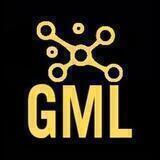Everything about graph theory, computer science, machine learning, etc.
If you have something worth sharing with the community, reach out @gimmeblues, @chaitjo.
Admins: Sergey Ivanov; Michael Galkin; Chaitanya K. Joshi
Информация о канале обновлена 19.11.2025.

 Показать ещё
Показать ещё
